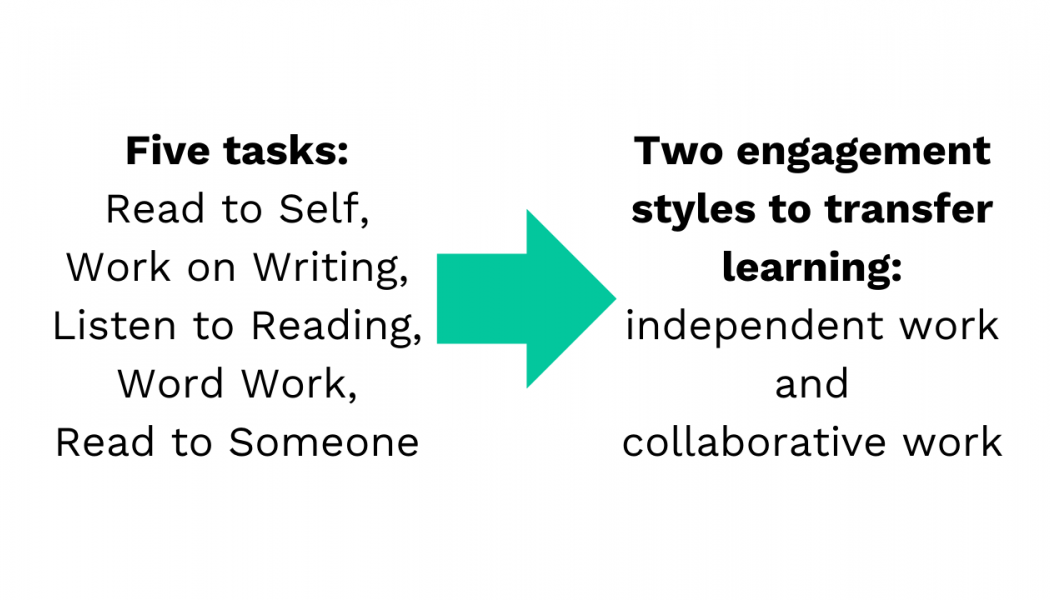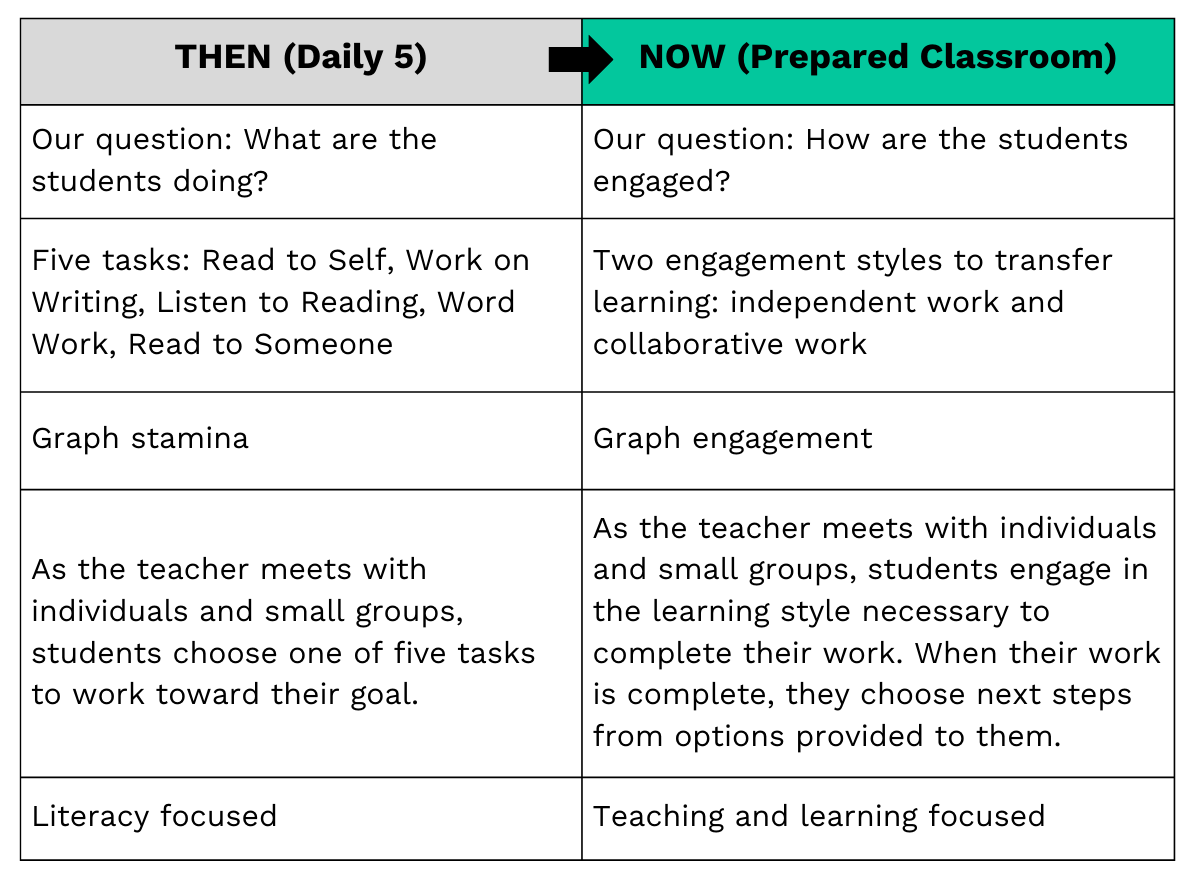Goodbye Tasks

Join Our Community
Access this resource now. Get up to three resources every month for free.
Choose from thousands of articles, lessons, guides, videos, and printables.
When the teacher is meeting with small groups, and conferring individually with students, what is the rest of the class doing? That is the question that spurred our early work creating Daily 5. Our students had varying abilities and needed different instruction. However, to provide that individualized, differentiated instruction, there needed to be purposeful work for the rest of the class. Our solution was Daily 5, a structure to organize the literacy block that helped the teacher meet all students’ needs.
The five tasks used in Daily 5 served as an authentic transfer of learning and came from the six language arts: reading, writing, listening, speaking, viewing, and visually representing. During Daily 5, students had the choice to Read to Self, Work on Writing, Read to Someone, Listen to Reading, and Word Work. Students were explicitly taught to read books that were a good fit, write about self-selected topics of interest, and be self-managers as they engaged in literacy tasks. It was an effective solution to make sure students had purposeful work while we were differentiating instruction with their peers.
A little-known fact is that when the idea of the Daily 5 book was first proposed to the publisher, they suggested that it was more about management than literacy. We considered that idea, because yes, we were teaching our students to be self-managers and independent learners. But Daily 5 was specifically created for the literacy block, so we continued on the literacy path.
Can you believe that was over 20 years ago?! And while the core practices that make Daily 5 successful are still there, many things have changed. Because the practices of Daily 5 allowed teachers to really get in and work with students in small groups and individually, we learned a lot about how they learn and what they need. As time has passed, our question has evolved from “What are they doing?” to “How are they engaged in learning?” We now ask ourselves, “How do I create a class of self-managers who are successfully engaged in independent or collaborative work, working toward their goals, while I meet with small groups and confer with students?”
When the focus was on what, students were taught to be independent during their work with each of the five tasks, choosing one and working toward their goals during a literacy session. Now the focus is on how, and students are taught to be self-managers during independent work and collaborative work. What they are doing during that time is guided by the classroom teacher, the grade-level standards, and their needs.
The shift was important and necessary, and here’s why:
- When the structure worked so well in literacy, we applied it to math and then to other parts of our day. We now focus on the management and self-regulation practices used for teaching and learning throughout the day, not just during the literacy block.
- We understand that to meet the variety of needs in the classroom, we need flexibility in our instruction. In the beginning this flexibility was in what students read and what they wrote about. Now, the flexibility is focused on student needs and teacher guidance. Students choose their good-fit space to complete their work, first working on what they must do (directed by the teacher), then moving into their choice of work out of the selections provided to them.
- Individual and collaborative work are part of day-to-day learning in both school and work life. Teaching and allowing time to practice the behaviors to be successful in these types of work is giving students a life skill.
- Students are given the tools necessary to be self-regulated so they can focus on the learning and not on what is expected of them. Consistency and clarity are key.

Now, instead of introducing the five tasks and making the focus about what students are doing, we introduce two engagement styles, placing the focus on how they are working – independently or collaboratively. We spend time introducing independent work and collaborative work using an I-chart and the Ten Steps to Teaching and Learning Independence. Below you will find links to launching briefs for the two engagement styles. These styles can be used throughout the school day, in any setting, with any content.
If you currently use Daily 5, you may wish to finish out your school year without changes. However, we are sharing this information now because you may want to introduce the two engagement styles as a way for students to focus on how they are engaged in the work they are doing, and prepare them for next year.
*Please note: We are a small company and are working diligently to update this information on our website. In the meantime, go to the Tip of the Week archives to view our newest work.







